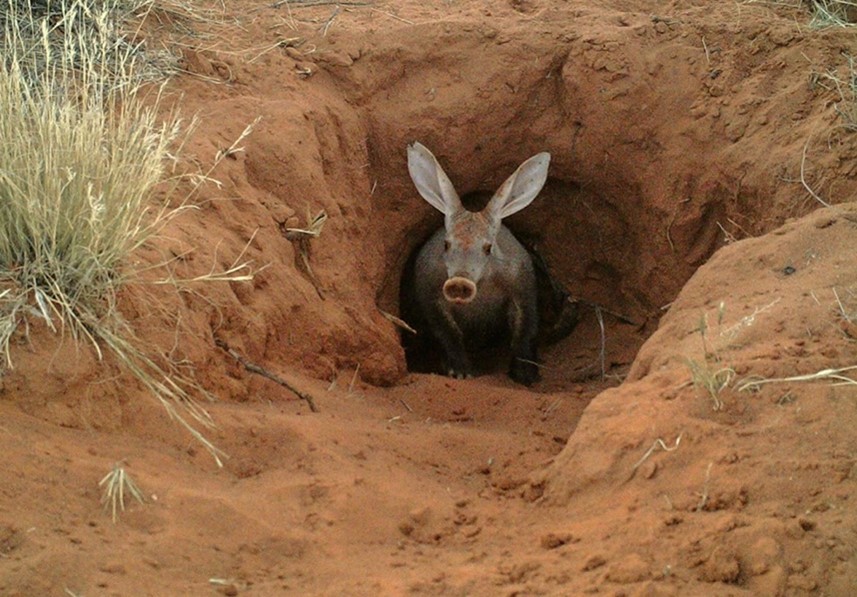
Confessions of a Technophobe, New Series 42
Part 4
1976 and beyond
Flushed with the glow of the success of “South Africa, the Best Kept Secret,” I kept in touch with SATour. I expected that I would receive further commissions from them, although in the back of my mind I was worried that X could still seek some revenge. In fact, he did. The chairman of the Board discussed with me the possibility of making a film on wildlife. I came up with the idea of expanding public interest beyond the traditional Big Five of wildlife, namely lion, elephant, rhino, leopard and African buffalo. From memory I think I called the idea “Creatures Big and Small.”
I planned to open the film with the question, “What is the most vicious and prolific killer of all African wildlife?” The answer, incredibly, is the ladybird! This tiny, beautiful insect exists on eating aphids. Aphids are sap-sucking pests that frequently damage crops as well as garden plants. One Ladybird can eat up to 5,000 aphids in its lifetime. Therefore, their reputation as the biggest killer in nature is well founded. Ladybirds are found in abundance in the bushveld regions of Africa. My synopsis for the film went on to explore many of the smaller creatures of the wild.

An increasingly rare animal to be found in the bush is the aardvark. This creature is mostly known for its appearance as the first word in many English language dictionaries. The word aardvark is the Afrikaans for an earth pig or ground pig. It is a nocturnal animal and lives in burrows, rarely appearing above ground during the day. It has a long snout and lives on ants, termites and other bugs. It is an amazingly strong animal. Many years ago, a farmer tried to haul an aardvark out of its hole. He couldn’t do it, so he tied a rope around its body and attached the other end of the rope to his horse’s tail. He then went to find some of his workers to help him remove the animal. When they returned, the farmer was horrified to see his horse with its backside firmly sitting on top of the hole. The aardvark had pulled the horse backwards as it retreated into its burrow. Although it was at most a quarter of the size of the horse, it still had the strength to pull the animal down onto the top of the hole!
The chairman liked the idea of including lesser-known creatures in the film and I was asked to develop the idea into a script. A couple of weeks later I was contacted and told to abandon the project. They did not have the budget to make the film at that stage. In the light of later events I suspect that X had somehow persuaded the Board to drop it.
I was disappointed and asked X if there were any other films that SATour was planning to make. He replied that there was a request from the catering division for an internal film on the activities of that division for SATour. X briefed me on the objectives of the film. I wrote a first draft of the script and submitted it. When I handed it to X, he casually mentioned that he had asked two other writers to submit scripts for the same subject. I was surprised as I was given to understand that I was the blue-eyed boy after the success of the travel film. X told me not to worry, he was sure my script would be accepted but it was policy to ask for more than one writer to submit their ideas.
A week or so later, I was told by X that my script had not been accepted and they had gone with another writer. I was shocked. As it happened, the head of the catering division was a Greek Cypriot and my wife Hero’s family knew him. I managed to get an introduction to him and set up a meeting. I said I was surprised that my script was unacceptable, as I had followed the brief very carefully. He shrugged and said that my script did not address most of the key elements of the brief and they were already filming the version they had accepted. I left the meeting feeling very confused. Only later did I realize that X had given me the wrong brief in order to make sure I did not get the job.
In the meantime, I received a call from X saying that they wanted to make a film on the Eastern Cape, would I be interested in writing and directing it? At that stage I was still not suspicious of X’s motives. I happily agreed to do the film. It was a part of South Africa that I felt was all in all the most beautiful and interesting region of the country. X then said that he had appointed the assistant cameraman in his internal film unit to shoot the film. I immediately objected. The person in question had proved to be quite useless during the filming of the award-winning travel film. He was actually a very nice person but seemed to be quite unsuited to the movie industry. X told me that it was not negotiable. I felt that as I had assisted X in creating the best possible shots for the earlier film, I could do the same with Y (let’s call him that). However, I figured that a technique that was still in its infancy at the time could help me to make sure that Y would give me what I wanted. This was the use of a small TV monitor attached to the camera, which would show me exactly what Y was filming. I could then watch the filming as well as replay it afterwards. In those days of filming with celluloid film stock, I would have to send the footage back to the laboratory outside Pretoria and wait for the “rush” copy to be sent back to me to check that I had the footage required. This would take a few days so that I would have to continue filming blind, not knowing how it all looked.
X grumbled about me using the TV feedback monitor, but I made it conditional on accepting the job. However, surprise, surprise, when we travelled down to the Eastern Cape and started filming, the TV monitor simply did not work. I called the company that had supplied it. They worked with me and Y to try and get it to work, without success. I asked for another unit to be sent to me, but they said they had no spare units. So I took a deep breath and continued filming without the monitor. As I had with X, I also checked every shot once Y set it up. If there was camera movement, I rehearsed this over and over with Y before letting him take the shot. Y was a really nice guy and he was happy to take my instructions, or so I thought.
In the event, I sent the film footage back to SATour every three or four days, but X always claimed he was too busy to send it to the labs. It actually took him three weeks before he had all the film we had shot processed. We had almost finished filming. X called me one morning and bluntly told me that we were to return to Pretoria immediately. I told him that we only had a few days more filming scheduled but he was adamant. I asked him why and he replied that the footage we had shot was unacceptable and he was cancelling the shoot. I was shattered. Y and I returned to Pretoria with our tails firmly between our legs. X set up a showing of the footage and, to my horror, he was right. The cinematography was awful. The composition was poor; a lot of the lighting and film exposure was bad. It was a complete mess!
I reminded X that I always had reservations about Y’s skills, and when the TV monitor failed to work I had done my best to ensure each shot would be as I wanted it to be. Looking at it on the screen, I realized that once I had made sure the composition of the shot was what I wanted, Y had on almost every occasion moved the camera, ruining the composition. His camera movement was also poor. X happily said that as the director of the film it was my responsibility to ensure that the camerawork was up to standard. He fired Y from the unit and told me not to bother to apply for any more SATour productions.
At first, I thought that Y had been carefully briefed to mess things up but on reflection felt that he simply lacked any skill with the camera. He was a genuinely decent person and tearfully apologized to me for his mistakes. Nevertheless, X had successfully achieved what he intended to do all along. I tried to speak to the SATour Board, but the chairman had just retired. Despite my earlier success, the new chairman refused to speak to me.
It was a classic stab in the back and frankly I should have seen it coming. X’s impeccable behavior during our successful travel film had been too good to be true and I should have seen his later maneuvers coming. It was a lesson in the Machiavellian skills of a truly repressive person to destroy someone like me, who never even had any interest in taking his job at SATour. I also realized on reflection that every one of the people he had employed in the film unit were lacking basic skills. He had employed them because they posed no threat to him, whereas I posed a huge, if imagined, threat should I have wanted to join SATour (which I did not). A few months later, I believe X was fired from SATour after he had sold stock footage to other companies and kept the money. I have no certainty on this but suspect it was true. Goodness knows what happened to him after that.
Licking my wounds after withdrawing X’s sharp knife from my back, I scrambled around for work. In the process I met Christopher Rowley who was one of the top TV commercial filmmakers in South Africa. He was an Englishman with a background in graphic arts in London before coming to Johannesburg. He hoped to make the transition from commercial to full-length theatrical feature films. He did, in fact, make two features, but the screenplays and stories were poor, and they were only averagely successful. He was, however, very successful with his commercials and made good money. He also made some documentaries when he had time in between commercials. His problem was that he was so good with the commercials that if his company was awarded the jobs, it was always on condition that Christopher directed them. Therefore, making another feature film and even his occasional documentaries became increasingly difficult to achieve. Documentaries usually took three to four weeks to film and were a better option for him.
At that time, the relatively young TV channel SABC started to commission outside companies to make documentaries. Christopher asked me to write and produce or at least production-manage the documentaries. It was also understood that if he was awarded a lucrative commercial, I would have to take over the direction. This suited me well and over the next two or three years I wrote and sometimes directed six documentaries including a series of six half-hour short films entitled “Night Owls” which explored the activities of the people who work at night. Christopher directed the first episode and was then awarded a major commercial and left me to it. It proved to be exhausting. I had written the scripts and was production-managing the series, which meant setting up the sequences during the day for the team to film at night. Now I had to direct the rest of the series as well. I was lucky to grab three or four hours of sleep before rushing around setting up the filming. Then as darkness fell, I would direct the sequences for that night.
We also made a film on white-water canoeing called “Heart Attack Canyon.” The name of the film was based on a deep canyon with the Tugela River flowing through it. A number of treacherous rapids made it the most dangerous stretch of white water in the country. The river was well stocked with trout and the name of the canyon came about because of the elderly retired fishermen lived in the area who would climb down into the canyon where the fishing was best, and some would have a heart attack trying to climb out of the canyon again. We recruited three of the top kayak exponents (advocates) in the country to fight their way through the rapids. Christopher. who directed this one, had obtained an ultra-slow-motion video camera and shot much of the kayaks in slo-mo as they went into the steep and fast-flowing rapids.
The result was some stunning cinematography with drops of water slowly bursting open as a paddle swung slowly in the air before plunging back into the water. In stark contrast there were stretches of placid water both above and below the canyon surrounded by beautiful scenery. For the first and only time, I decided to write the commentary in poetic form. We asked a top Shakespearean actor to record the commentary, but it proved to be overly theatrical. We then used a regular voiceover artist who did a wonderful job with the poetic commentary. We later learned that the SABC had resold the film to more other countries than any other film they had ever commissioned. I had a friend who was flying to the Far East and was excited to see the film with my name on it.
Each film had its own adventures in the process of filming. We made a film on caving. South Africa has many massive limestone caves. The local speleologists (cavers) took us on a practice descent into a cave near Johannesburg. I was the largest member of the party and got wedged between some rocks on the way down. I finally managed to extricate myself and asked if there was a better way out. The cavers chuckled and said they would take a different route for my sake. This turned out to be a narrow tunnel which grew tighter and tighter until finally we had to squeeze through a tiny half-moon hole in the rock. I managed to get through by turning my head to one side and breathing out all the air I could find in my lungs, so that my chest was flat enough for me to escape. I have been fairly claustrophobic ever since. And that was just the first cave! Fortunately, none of the other caves posed the same problem.
One cave, however, was under water with the promise of spectacular stalactites and stalagmites on the other side of an underwater swim of a few yards. I swallowed my fears and did the dive. The inner cave was indeed beautiful. By the way, we all contracted histoplasmosis, known as the caver’s disease. It is caused by spores from bat guano being released under certain humid conditions. It gives the victim all the symptoms of pneumonia. We were warned not to go to a doctor who would not believe we had such a rare disease and would prescribe antibiotics which feed the bacteria and often kill the patient. Seven of our crew stayed in bed and starved the infection to death. One other member went to his doctor, was given antibiotics and very nearly died.
It usually pays to listen to the experts, in this case the cavers, but not always.
Peter Warren ignored many so-called IT experts who said that the ExoBrain system could never work. Today as our techies have win after win as they approach the completion of the basic ExoBrain model, Peter’s stubbornness and determination has paid off in a very big way!
